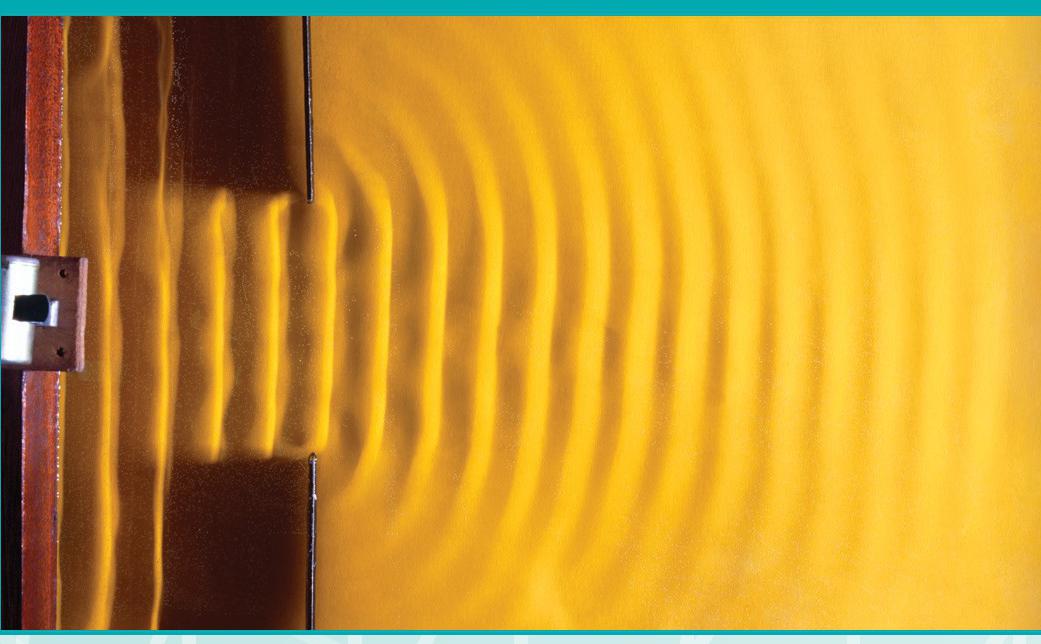
1 Diffraction of water waves in a ripple tank
Andrew Lambert Photography/SPL
When waves meet the edge of an obstacle or travel through a gap, they are diffracted. The wavefronts bend and travel at an angle to their original direction (1). Diffraction is most noticeable when the width of a gap is similar to the wavelength (2). If the gap is much larger the waves bend through only a small angle, and if it is much smaller they are ref lected back rather than travelling through.
When waves meet in phase, they superpose to give a large amplitude, and where waves of the same amplitude meet in antiphase the resultant amplitude is zero (3).
Your organisation does not have access to this article.
Sign up today to give your students the edge they need to achieve their best grades with subject expertise
Subscribe




